
Editor’s Note: The staff here at Top of the Morning is excited about our second installment on the Language of Nephi. You can read Part I of this series right here. Thanks for joining us for another look at the Language of Nephi which we believe you'll enjoy even more if we sub-titled it the alphabet included logographic system. Don't worry. We'll explain.
The Book of Mormon mentions two languages, the Language of Nephi and the Language of the Egyptians. Were they related? Was one used by the Lamanites and the other by the Nephites? Or were they different names for essentially the same language? Were they a collection of written characters or a spoken tongue? To understand the obsession Book of Mormon scribes had for their language you may want to view language as they viewed it, as an almost exclusive reference to written characters. For ancient Nephites and Lamanites the spoken tongue was another matter, but it likely wasn't considered their language or what today linguists define as a system of symbols for communicating ideas.
Written language doesn't evolve as quickly as the spoken tongue, but changes do occur over time, influenced almost entirely by the more volatile changes in the phonetic language. Once the Nephites were established in the New World, the term Language of Nephi was a logical distinction for their evolving written language. Moroni’s declaration that their reformed Egyptian characters were influenced by changes in the spoken tongue is an authentic expectation of the written Nephite language evolving in geographic isolation from the mother script.
What we usually refer to as Egyptian hieroglyphics began as a collection of characters, each one representing a whole concept. Symbols were later developed to represent the sounds in the spoken language, what we call an alphabet. Instead of discarding the hieroglyphic characters for the newly developed alphabet, Egyptians combined the two by inserting letters from the alphabet alongside hieroglyphic characters. The result is what scholars refer to as the alphabet included logographic system. For three thousand years the Egyptians wrote in a jumble of phonetic and pictographic characters. Writing was a difficult skill to acquire and the ancient Egyptian school children fortunate enough to afford an education were schooled in the difficult skills of letters.
Egyptian children weren't the only students. Around 610 BC, Egypt reached its pinnacle of influence across the ancient world. Similar to the Lamanite educational experience, the written language of choice in Lehi's day was tied to economics. English in our modern world won that same enviable status. An understanding of Egyptian script carried with it the possibility of wealth and every Phoenician, Assyrian, Greek, Arab, and Babylonian clamored to learn the language of prosperity. Egyptian teachers found employment in the homes of wealthy Hebrews, Assyrians, Ethiopians, and Greek businessmen where they taught the language of commerce—the Language of the Egyptians. The Book of Mormon begins with a very authentic reference to the education of the sons of Lehi. Though Laman, Lemuel, Sam and Nephi spoke Hebrew, they were instructed in the written characters of Egyptian origin.
Chinese scripts, like the ones pictured above, and Mayan scripts pictured below, are further excelent examples of alphabet included logographic systems. In order to read the scripts you must first learn the meaning of hundreds of characters. It's a difficult challenge. It’s also considered an achievement. The difficulty inherent in these complex writing systems makes the spread of literacy in the general population difficult, but the numerous benefits include a sense of multilingual capacity. Chinese and Japanese speakers can't communicate orally, but since both groups use the same characters they can write to one another. Educated peoples of the ancient near east followed the same pattern. They spoke different languages, but they shared the same written characters.
Nephi spoke Hebrew, but wrote using Egyptian characters. A thousand years later it’s likely that Moroni knew nothing of Hebrew. In fact his name, Moroni, is a Jaredite name likely from the Zoquean/Olmec language spoken along the Atlantic Gulf Coast north of the narrow neck of land. It means one from Moron, the ancient Jaredite Capital and also the general location from which his father Mormon migrated to Zarahmela. Nephi's Hebrew tongue was swallowed up by the lingual tide of the much larger Meso American populations speaking the dominant dialects of the Pacific coastal highland regions. If spoken Hebrew survived all the way down to Moroni's day it was preserved among very few in the royal ruling class of Nephites--a difficult and highly unlikely preservation of a linguistic artifact that required a thousand years of vigilance. Throughout history the spoken tongue of the smaller population is nearly always lost in the language of the larger, dominant population and it’s likely that Moroni, if he were to meet Nephi, would not have been able to communicate orally. However, by using the alphabet included logographic system of the Language of Nephi, Moroni could have written to his prophet colleague.
It appears that the characters in the Language of Nephi were likely used by speakers of different tongues which would explain the fundamental lack of any reference for the need of interpreters as the Nephites governed what became a multilingual nation no later than 130 BC and likely as early as Nephi's inland migration from the Pacific coast to the highlands at the City of Nephi. This early multilingual diversity among Nephi and his people recalls the account of Sherem, an outsider who likely learned the phoenetic Hebrew tongue and the pictographic written Nephite script and used his acquired skills to study the Laws of Moses and his oral skills to counter the doctrines taught by the Prophet Jacob.
Ancient Meso Americans contemporary to the Nephite Civilization (580 BC to 400 AD) are refered to by archeologists as pre-classic Mayans (550 BC to 450 AD) living in southern Mexico and Guatemela. The overlapping time periods for the rise of these civilizations are identical and evidence from both cultures suggest their language systems were similar if not the same. The Mayans spoke hundreds of dialects in four major language groups. Quiche, Chol, Yucatec, and Tzeltal. We know that the Nephite and Lamanite civilizations, taken together, spoke at least three dialects. Nephite, Lamanite, and Mulekite. The Book of Mormon also hints at multiple spoken dialects among the Lamanites. And Alma's mission to the out-post city of Amonihah high in the Pacific Coastal mountains in the extreme northern territories of the Nephite Kingdom may have been, for him, a foreign language mission. Its likely that the larger Lamanite population spoke many languages. Despite their lingual diversity, Book of Mormon civilizations and Mayan civilizations used a similar alphabet included logographic system which may explain why Book of Mormon scribes remain silent about any need for translation when Nephites encountered Lamanites. It also explains the fascination for Lamanite scribes for teaching the written Language of Nephi throughout the Lamanite kingdom as a means to breakdown language barriers between multilingual subjects, improve communication, expand trade, and increase wealth.
The alphabet included logographic system of writing is beset with exponential ambiguity. Take the Egyptian character for Lotus flower. It’s also the character for the numerical concept of a thousand. And then there is the sheer problem with language capacity. Ancient scribes couldn't create pictures for every expression of thought. When they determined that the number of characters didn't begin to match the countless ideas requiring expression or the ever-expanding lexicon of words in the spoken language, Chinese, Mayan and Egyptian scribes did what Nephite and Lamanite scribes likely did. They assigned different meanings to the same characters. It was a formula for confusion and to fix the increasing number of ambiguities additional characters were placed alongside the characters of double meaning. It's a classic case of determinative modifiers. The additional characters provide the context, essentially requiring the reader to read the entire phrase in the text to understand the intended meaning of a single character or risk serious misunderstanding. Speed reading was next to impossible. Moroni was likely referring to this determinative modifier frustration when he very authentically recorded that wherefore, when we write we behold our weakness, and stumble because of the placing of our words; and I fear lest the Gentiles shall mock at our words. (Ether 12:25)
Mayan writing lacked the same precision that elicited Moroni's complaint. Linguist Sir Eric Thompson informs us that, "the reader had to have a good background of mythology and folklore to comprehend the texts." It’s that same idea Nephi was trying to convey when he tells us that a background in Jewish culture was needed to understand the context of Isaiah's writings(2 Nephi 25: 1-2,5).
In Part I of this series I pointed out that Hebrew words, grammar and the conceptualization of Hebrew ideas has been identified in Mayan writing like the glyphs you see pictured below. That makes sense to readers of the Book of Mormon if indeed it was Hebrew speakers who introduced the new communication tool of a written language into a multilingual population already living in the Land of Nephi when Lehi and his family arrived. What has not been identified in Mayan writings is any Egyptian word or phrase. The lack of any Egyptian word would suggest caution on the part of researchers unless, of course, you consider the entire alphabet included logographic system of the Mayans nothing less than the prodigal son of the Egyptian mother language.
Join us next week for Part III of this series, the Language of Nephi, when we take a closer look at the beginnings of the Mayan Language at Kaminal Juyu in
 highland Guatemala around 550 BC and why, among many other factors, those Mayan glyphic writings like the ones you see pictured to the right, led Book of Mormon scholars to suggest this location as the original City of Nephi. The language that disseminated from this location was the civilizing force that catapulted Mayan culture into the most advanced civilization of the ancient New World. Is it possible that the Language of Nephi influenced the only ancient American culture between Alaska and Tierra Del Fuego to develop a written language? Join us next week when we explore the language artifacts surrounding the City of Nephi.
highland Guatemala around 550 BC and why, among many other factors, those Mayan glyphic writings like the ones you see pictured to the right, led Book of Mormon scholars to suggest this location as the original City of Nephi. The language that disseminated from this location was the civilizing force that catapulted Mayan culture into the most advanced civilization of the ancient New World. Is it possible that the Language of Nephi influenced the only ancient American culture between Alaska and Tierra Del Fuego to develop a written language? Join us next week when we explore the language artifacts surrounding the City of Nephi.__________________________
Join author David G. Woolley at his Promised Land Website.

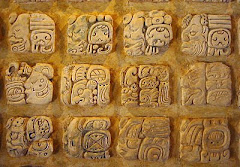




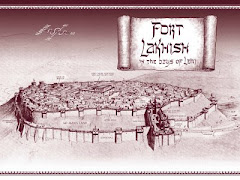



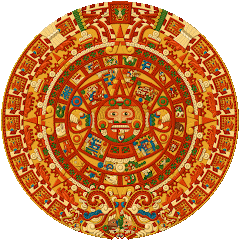

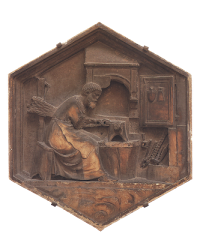

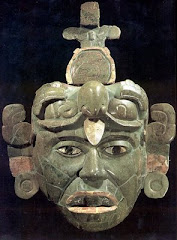



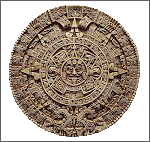

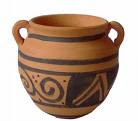
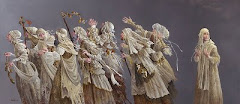




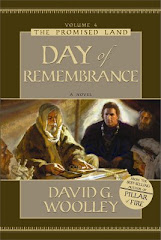




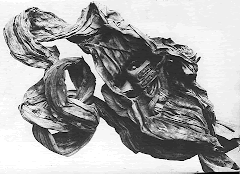








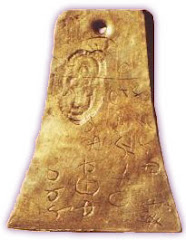


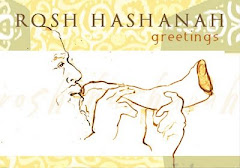




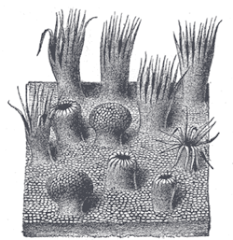



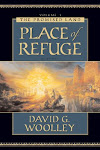


16 comments:
Ok, David, this is my third reading of this post and I have picked out even more information to ponder. I am always amazed by the amount of information that you share with us. The sheer volume of it is overwhelming. How do you ever find time to do all the research that you have to do? Amazing person, you are.
Another thing, I am so glad that the spirit can bear witness of the truthfullness of the Book of Mormon because there are so many nuances and meanings that I miss because I am so uninformed. Your posts allow me to obtain knowledge that I would otherwise be to lazy to seek out (if I even knew that I needed to seed it) and my understanding of the scriptures increases with each reading, both of your post and the scriptures.
Thank you.
Whew!If I'd been a Nephite, I would have been in remedial language arts for sure. So, back up and see if I'm getting this.
Jerusalem, 600 B.C. Common language spoken and written: Hebrew. Grocery list...Hebrew. Dry cleaning receipt...Hebrew. Traffic citation...Hebrew. Letter to my aunt in Sidon...Hebrew. Holy writings...mostly Hebrew. Stick of Judah...Hebrew. International commerce...Egyptian. International law...Egyptian. International communique...Egyptian. Doctoral Dissertation...Egytptian? Brass plates....Hmmm. Wasn't one of the purposes of carrying them to the promised land to prevent illiteracy? I have often wondered about that because Lehi and his family seemed to be very literate. Couldn't they have just passed on that common knowledge to their posterity? Surely education would have been a very high priority. But, after reading your post, I am seeing a bigger picture. God looks ahead a ways and sees this vast civilization speaking many tongues and dialects. He needs to preserve an important record to come forth in the latterdays, One that will be abridged by one man centuries hence. He needs a language that is essentially timeless and can cross culture barriers. Voila! Brass plates! If the brass plates were written in the Egyptian characters, that language could be passed on to future generations. (A written sample was needed to perpetuate such a complicated system.) No matter how their spoken languages changed,this form of written communication could endure and be used to create the stick of Joseph! So Dave, how did I do. Am I getting it or did I miss it by a mile?
Anita:
It looks like you've got it. Do you have any idea how fast you have to drive your donkey to get a speeding ticket in Jersualem?
The written language was preserved among the nobel elite class of direct descendants of Nephi, but it wasn't likely taught in the public educational sense that we teach language. In fact, King Benjamin's sons were fortuante that their father had the means to teach them in the language. Most Nephites by that time, didn't have the means to afford an education in writing arts and still keep up with the demands of planting and harvesting.
I'm SO glad you aren't private anymore! My family members are happy that I am no longer complaining about not being able to finish reading articles in your blog! This is all so interesting, but I'm still reading some other stuff you wrote a while ago. I'll catch up. :) Thanks for re-opening....it made my day. I'm still smiling! :) By the way, I'm half way through Pillar of Fire Book 1. (I know, I know....I'm way behind..) Excellent!
I just finished reading The Language of Nephi Parts I and II. I just wanted to comment again to tell you that the reason you should keep your blog open is so that people like myself, who find themselved so very wrapped up in "life is just so DAILY" mode, have the opportunity to expand their horizons at the click of a button. After reading all the comments posted on both posts, I realize that I am more emotionally affected by your writings than academically as the others seem to be. I learned alot however, and appreciate your ability to bring light to subjects I would never have the opportunity (or time... :) ) to research myself! Thanks. :)
Hi Cami:
Thanks a bunch for you comments. They give me reason to keep at it. One of the main reasons the Top of the Morning went private was because of the amount of time required to maintain this blog. Your comments lead to me to believe that maybe we should keep at it.
Please stop back often. I'll make sure we keep things updated.
Thanks!
Here! Here! (or is that Hear! Hear!)Cami. I don't know how much time it takes to maintain this blog or if it's worth it to you, but thanks Dave. At the dinner table the other night I shared what I had learned about the language of Nephi. It was fun to amaze my family. References to "language" have been everywhere in my reading in the Book of Mormon lately. Huh! They weren't there before...Today in church I found myself making some connections I hadn't seen before because of things I am learning from your research. And it wasn't just intellectual hair splitting stuff either.Thanks for helping me deepen my Gospel study and increase the neuro pathways in my brain at the same time!
Is it "next week" yet? :)
You DID say, :Join us next week for part III" yes? Just checking. :)
Sorry Cami:
It's been a very busy week. Plus a visit to the dentist. Its nearly finished. It should be up Sunday evening or Monday morning. Fair?
Thanks for checking back.
Fair enough. I'm just yankin' your chain. :) My brother is a dentist, if he weren't, I would probably never go! You should push your "staff" :) to do a little more for you! Lol! I've been devouring your sidebars and I'm starting to dream about Nephites eating "killer tomato soup" while drinking rootbeer in bottles that resemble "the real stuff!" Take care, we'll take whatever we can get!
Wow! The more of your sidebars I read, the more I wonder when you ever sleep!!! I am loving this! The neat thing is that as I read your Pillar of Fire series, these sidebars add extra meaning and understanding. Not only that, but I'm studying the atonement with some friends and I have sure gained some awesome insights from your blog! Thanks for taking the time to do this....we appreciate your efforts. (I guess what I'm trying to say is: please don't give up this blog, there's enough info in here to last us until you have time for it again!) Plus, I KNOW a lot more people read this than you'll ever get comments from. I think you just leave us all speechless! :) Have a great week, busy is good.... :)
David,
Thank you very much for your efforts to make the archeology of the BofM available to us in quite plain terms. This is a very nice complement to your marvelous series.
Hi Miguel!
Thanks for stopping by. I know I've been promising to post all the posts that are in the oven right now. I have a host of them and they're not ready for posting just yet. The next one is part III in the Language of Nephi series. It should be up in the next two days.
I have a deadline to meet in about thrity days for the volume five in the Promised Land Series, Compass of God, and it is taking a lot of my thinking and writing time.
But I will persist. Once this deadline is past, I will be much more regular.
Please stop by often and enjoy, comment, and point things out to me...
All the best!
Post a Comment